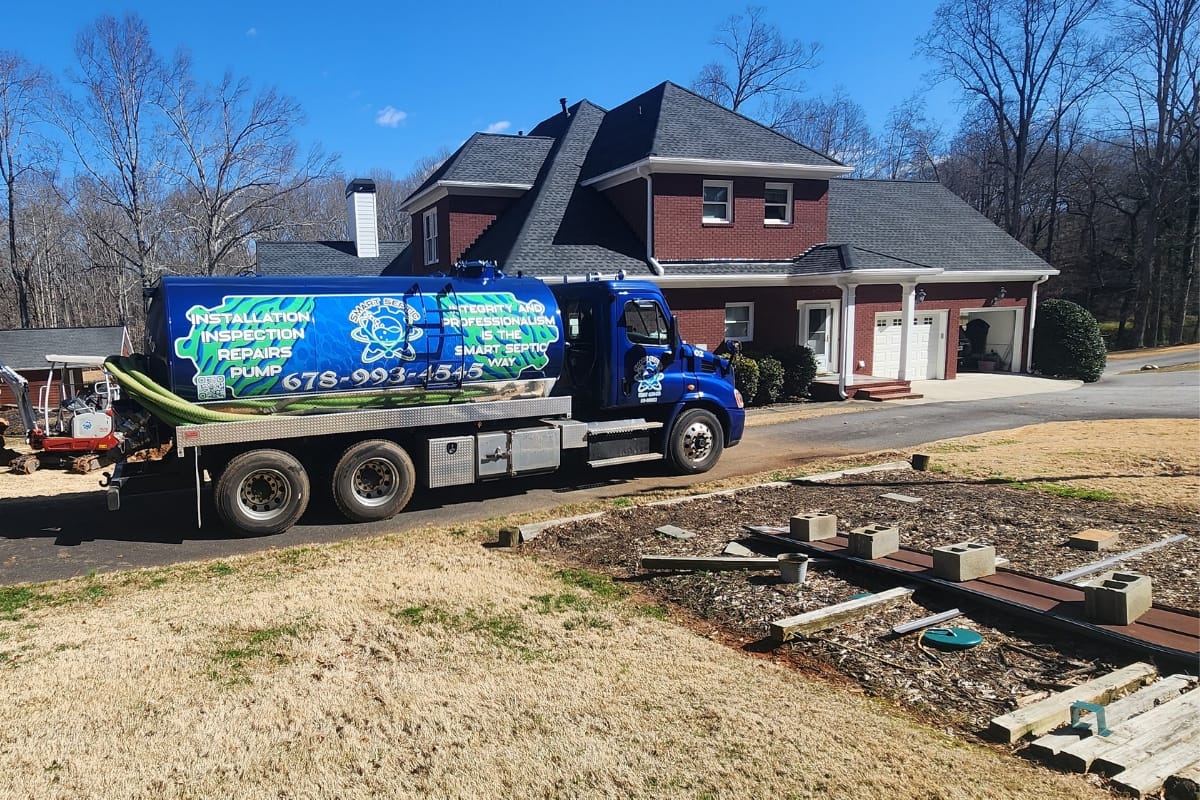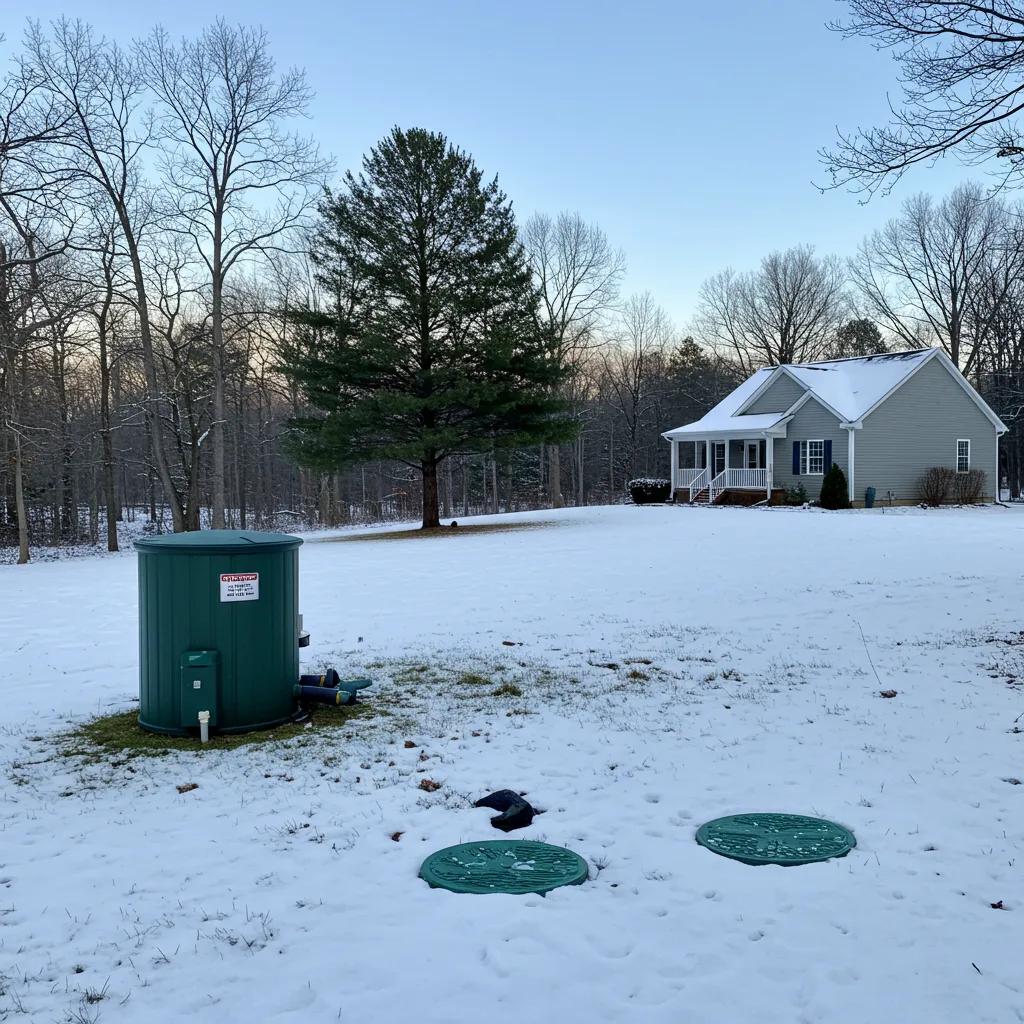Is your septic system showing signs of trouble? Many homeowners face common issues that can lead to costly repairs and disruptions in daily life.
This guide provides clear steps for identifying problems, understanding septic tank pumping, and learning how to maintain your system for long-term health.
By the end, readers will know how to assess their septic issues and when to contact professionals like Smart Septic Pros for expert assistance and timely pumping frequency recommendations. Addressing these concerns with these septic system repair guidelines early can save time, money, and stress.
Septic System Repair Guidelines for Homeowners: What to Do When Things Go Wrong
Understanding the Basics of Septic Systems
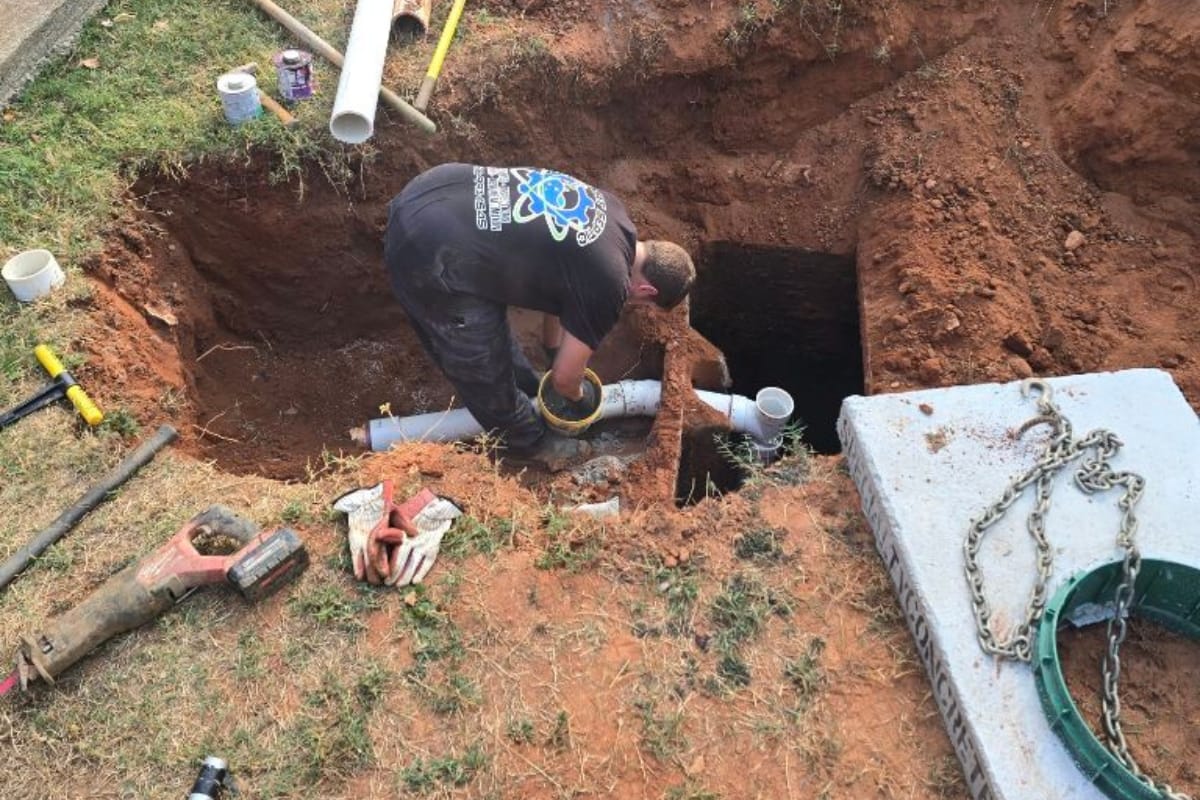
Septic systems play a crucial role in managing wastewater for homes not connected to municipal sewage systems.
Understanding what a septic system is, how it works, and its key components is essential for homeowners. The common types of septic systems vary based on soil and property needs.
Recognizing signs that indicate septic emergencies is vital to avoiding costly repairs.
What Is a Septic System and How Does It Work?
A septic system is an underground wastewater treatment setup commonly used in homes that are not linked to a public sewer system.
It consists mainly of a septic tank, where sewage is collected, and a drain field that helps to filter the water safely back into the ground.
After waste flows into the tank, solids settle at the bottom, while the water that remains on top—called effluent—is distributed through pipes in the drain field for further treatment by the soil.
To keep a septic system functioning efficiently, regular maintenance and appropriate pumping frequency are key.
Homeowners should schedule periodic septic tank pumping to remove accumulated sludge and scum, which can effectively prevent back-ups and costly plumbing issues. Being aware of what goes down the drains is also important; disposing of grease, chemicals, or non-biodegradable items can damage the system.
Key Components of a Typical Septic System
Key components of a typical septic system include the septic tank, pipes, and drain field. The septic tank serves as the first point of treatment, where waste from the toilet collects and separates into solids and liquids.
The liquid then flows into the pipes leading to the drain field, where it undergoes further filtering through the soil, ensuring that harmful bacteria and contaminants are effectively eliminated before re-entering the groundwater.
Another important aspect of septic systems is their impact on water conservation. Homeowners can enhance the efficiency of their septic systems by being mindful of what enters their toilets and drains.
Avoiding excessive flushes and opting for low-flow fixtures can help reduce the volume of water and solids entering the system, thereby minimizing the risk of backups and prolonging the life of the septic tank and its components.
Common Types of Septic Systems and Their Uses
When discussing common types of septic systems, traditional gravity systems often come to mind. These designs rely on gravity to transport waste from the home to a concrete septic tank and then to a drain field.
Homeowners should schedule regular inspections and maintenance to ensure the system remains functional while addressing any potential erosion issues that may arise in the drain field area.
Another notable type is the mound system, which is used in areas with poor drainage or shallow soil. These systems elevate the drain field above the natural ground level and incorporate a mound of sand to filter waste.
Regular maintenance and monitoring are essential for mound systems, as they can require more oversight to prevent waste from pooling or creating odors.
- Traditional gravity systems
- Mound systems
- Importance of regular inspections
- Maintenance to prevent erosion
Signs Your Septic System Needs Repair
Homeowners should be on the lookout for several signs indicating that a septic system might need repair. For instance, if solid waste begins to back up into the home or if showers and sinks drain sluggishly, this could suggest a blockage in the system.
Ignoring these early warning signs can lead to more significant issues, including potential health risks from wastewater exposure.
Additionally, the presence of sludge or unusual odors near the septic tank or drain field points toward a malfunctioning system that requires immediate attention.
If the septic tank‘s cover appears rusted or showing signs of wear, particularly in metal tanks, it may be time for an inspection. Addressing these issues promptly can help prevent costly repairs and ensure a healthy living environment.
Septic systems can fail unexpectedly, causing trouble when least expected. Recognizing the signs of common issues can save time and money down the road.
Identifying Common Septic System Issues
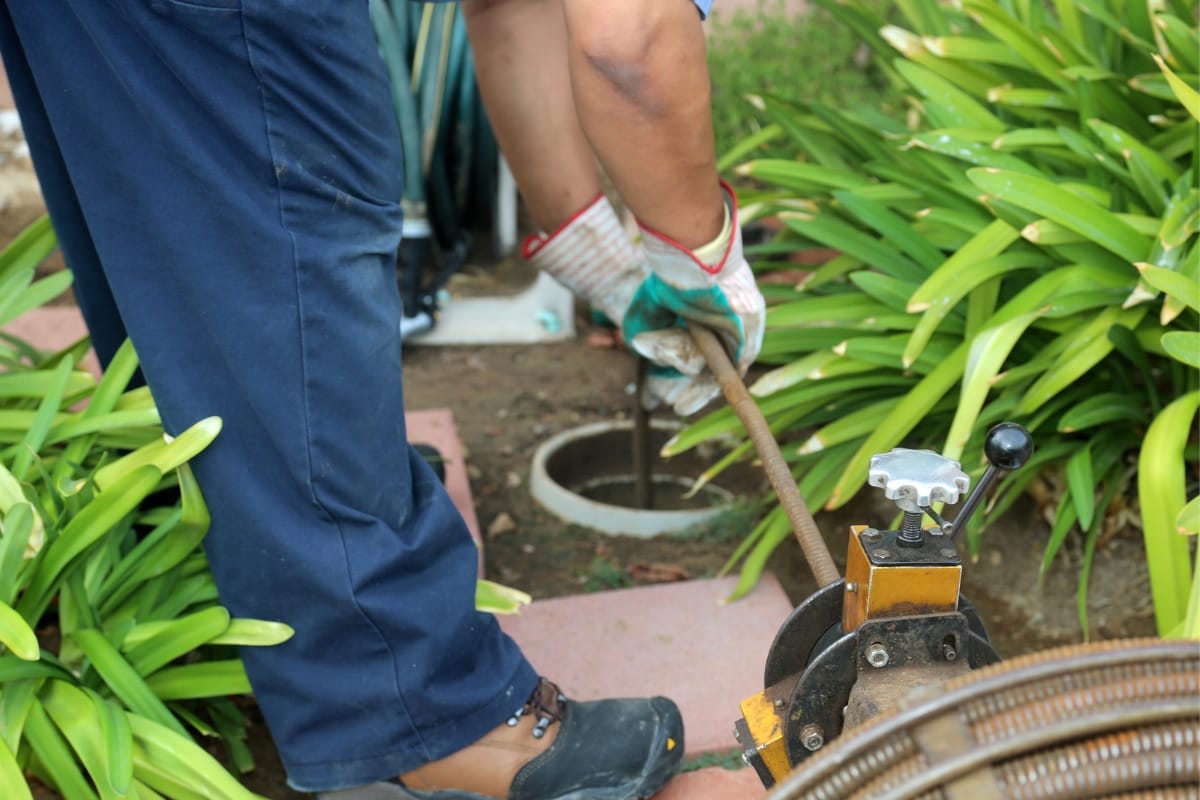
Recognizing symptoms of a failing septic system is essential for homeowners to maintain a healthy environment. Common indicators such as root intrusion, stagnant water resembling a flooded area, or unusual rising smells from plastic tanks can signal deeper issues.
This section will explore how to inspect septic systems for damage, the causes of system failures, and the effects of hazardous materials like paint on system function.
Recognizing Symptoms of a Failing Septic System
Recognizing symptoms of a failing septic system is vital to safeguarding both the home and local groundwater.
Homeowners should be attentive to signs such as slow drainage in sinks or toilets, which might indicate a buildup of grease or oil blocking the pipes. Frequent backups can lead to leaks that not only disrupt daily life but can also pose risks to nearby irrigation systems and the surrounding environment.
Unpleasant odors near the septic tank or drain field often signify a malfunction. If homeowners notice unusual smells or if water pools in the yard, it could point to a breach in the system, leading to untreated sewage entering the groundwater.
Quick action can prevent costly repairs and potential health hazards, ensuring a safe and functional septic setup.
Exploring the Causes of Septic System Failures
Several factors contribute to septic system failures, and understanding these can help homeowners take action before problems escalate.
One common cause is inadequate maintenance; when septic systems are not pumped regularly, sludge can accumulate, leading to blockages and ultimately system backup.
Additionally, introducing non-biodegradable materials or harsh chemicals can disrupt the natural breakdown of waste, causing further septic system problems.
Another frequent issue arises from improper drainage or landscaping that alters the flow of water around the septic system. For example, roots from nearby trees can infiltrate these systems, leading to serious damage or even complete failure.
Regular septic system maintenance, including inspections and addressing potential threats like tree roots, can go a long way in preventing costly repairs and ensuring the longevity of the septic system.
How to Inspect Your Septic System for Damage
Households can effectively check their septic systems for damage by starting with a visual inspection of the area around the tank and drain field. Homeowners should look for signs of pooling water or unusual wet spots in the yard, which might indicate leaks.
If the system is functioning well, there should be no standing water around it. Additionally, they can monitor areas where drip irrigation is installed, as changes in the performance of irrigation systems might suggest underlying septic issues.
To take the inspection a step further, homeowners can also assess their plumbing fixtures for any signs of slow drainage or frequent backups. These symptoms often indicate a deeper problem within the septic system. If any unusual odors are present, that could signal a need for immediate attention.
Regular checks help catch any issues before they escalate, ensuring the septic system remains in good working order and preventing costly repairs down the road.
Identifying Hazardous Materials and Their Impact
Homeowners should be cautious about hazardous materials that can disrupt septic system operation.
Chemicals like paint, solvents, and certain cleaners can harm the natural bacteria necessary for breaking down waste. Proper disposal methods for these substances are essential to prevent damage, and individuals can often find local hazardous waste disposal options to prevent problematic contamination.
Another concern involves food waste and oils, which can solidify in the septic tank and cause blockages. Composting or using garbage disposals sparingly can help manage these materials.
By understanding the types of substances that may compromise a septic system, homeowners can better protect their investment and avoid costly repairs:
- Identify hazardous materials that can affect septic systems.
- Understand proper disposal methods for chemicals.
- Avoid food waste and oils that can cause blockages.
There are problems in every septic system. Getting to the fixes can save you a lot of trouble.
Step-by-Step Guidelines for Repairing Your Septic System
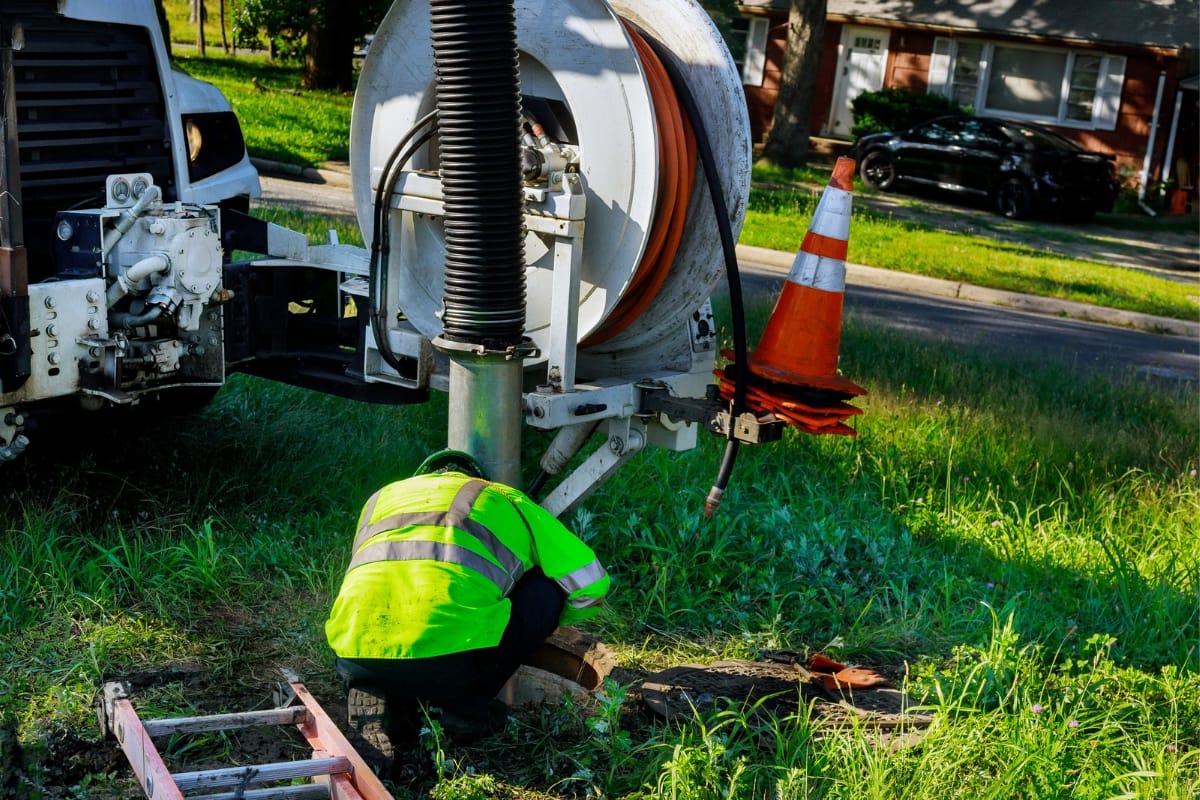
This section covers essential preparations for septic system repairs, including the tools and materials needed throughout the process. It also provides clear, step-by-step instructions for addressing common septic issues.
Finally, it discusses scenarios when seeking professional help is the best option. Understanding these aspects is vital for maintaining an efficient and functional septic system.
Preparing for Septic System Repairs
Before starting any septic system repairs, homeowners should prepare by gathering essential tools and materials. This includes items like a shovel, gloves, safety goggles, and a flathead screwdriver.
Understanding the nature of the problem is crucial, as identifying whether the issue stems from clogs, tank failure, or drainage field problems will determine the necessary steps for effective resolution.
It’s also wise to locate the septic tank and drain field before any work begins. Homeowners can find this information on property surveys or local health department records.
Knowing where these components are situated can streamline the repair process, helping avoid accidental damage during excavations or inspections. Preparing adequately ensures the entire process is smoother and reduces potential delays:
| Preparation Step | Description |
|---|---|
| Gather Tools | Collect a shovel, gloves, safety goggles, and a flathead screwdriver. |
| Identify the Problem | Determine if the issue is a clog, tank failure, or drain field malfunction. |
| Locate Components | Find the septic tank and drain field using property surveys. |
Essential Tools and Materials for the Repair Process
When preparing to repair a septic system, having the right tools and materials is essential for an efficient process. Homeowners should gather basic items such as a shovel, gloves to protect their hands, and safety goggles to shield their eyes during any excavation or inspection.
Additionally, having a flathead screwdriver handy can assist in opening access points or making adjustments to components, ensuring everything operates smoothly.
Beyond these basic tools, homeowners might also consider having a pump on hand for any sludge removal. A hose can be useful for cleaning during the process, and access to a septic-safe treatment can help maintain the system‘s bacterial levels after repairs.
Ensuring that all necessary equipment is available upfront can streamline the repair process and minimize disruptions:
- Shovel for excavation
- Gloves and safety goggles for protection
- Flathead screwdriver for access points
- Pump for sludge removal
- Hose for cleaning
- Septic-safe treatment for maintaining system bacteria
Detailed Repair Steps for Common Septic Issues
When addressing common septic issues, the first step is to pinpoint the problem. For instance, if homeowners notice slow drainage in their sinks or toilets, this may indicate a clog in the pipes.
To tackle this, they can start by examining visible portions of the system and using a plumbing snake to clear blockages, ensuring that the system functions properly without resorting to harsh chemicals that could damage the septic environment.
If the issue stems from the septic tank itself, such as an overflow of sludge, homeowners should consider pumping the tank. The process typically involves finding a licensed service provider who can safely extract the sludge and inspect for any structural issues in the tank.
This proactive approach not only fixes current problems but also helps prevent future backups, ensuring the septic system remains efficient and reliable.
When to Consider Professional Assistance
Homeowners should consider seeking professional assistance for septic system repairs when they encounter recurring issues like frequent backups or slow drainage that simple maintenance cannot resolve.
In situations where there is an unusual odor or pooling water around the septic tank or drain field, it’s a clear signal that something deeper may be wrong. Qualified septic technicians can diagnose the problem accurately and provide effective solutions that ensure the system operates safely and efficiently.
Furthermore, if a homeowner feels uncertain about inspecting or handling their septic system repairs, seeking expert help is a wise choice. Professionals possess the knowledge and tools to perform repairs correctly, often catching potential issues before they escalate into major expenses.
Relying on experienced service providers not only saves time but also protects the investment in the septic system, giving peace of mind to homeowners concerned about their environmental responsibilities:
| Situation | Recommendation |
|---|---|
| Frequent backups or slow drainage | Consider professional inspection and repair. |
| Unpleasant odors or pooling water | Seek licensed septic services for diagnosis. |
| Uncertainty about repair processes | Consult with experts for guidance. |
Now that the repairs are done, it’s time to think about keeping things running smoothly. A little care today can save a lot of trouble tomorrow.
Maintaining Your Septic System for Longevity
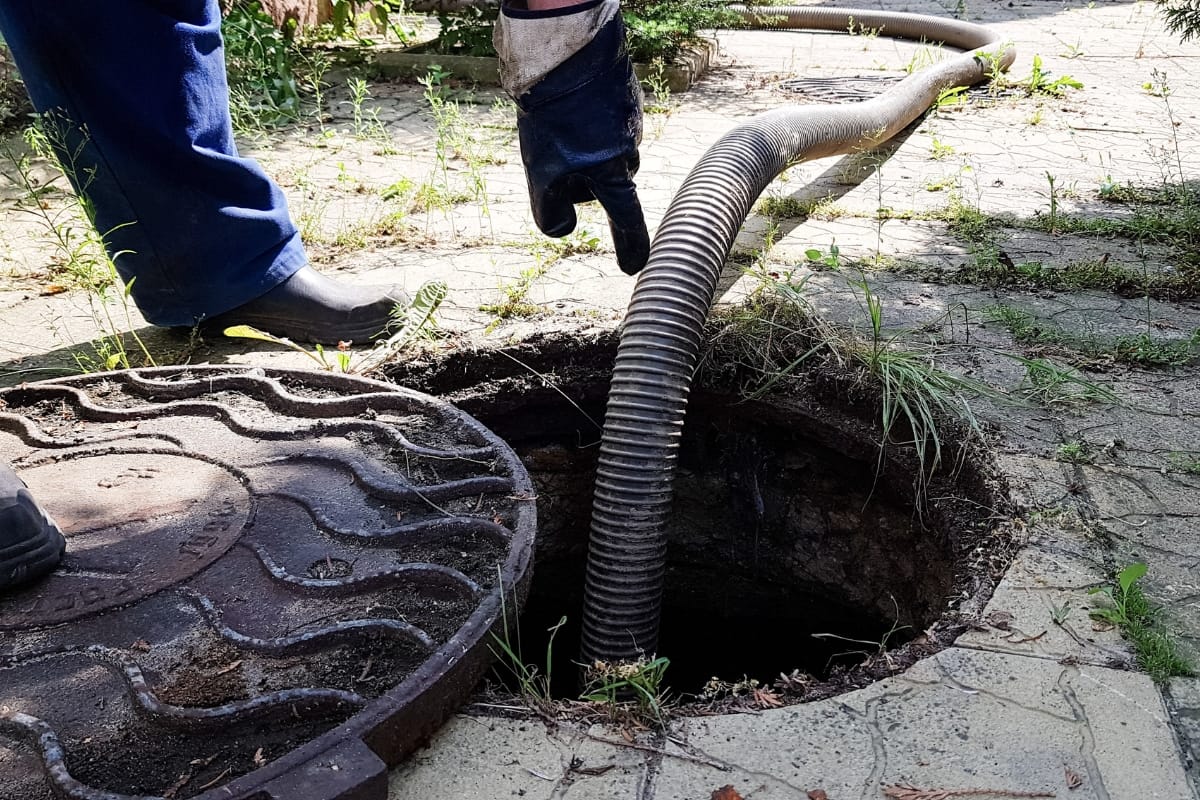
Maintaining a septic system is crucial for ensuring its longevity and efficiency. Regular maintenance tasks, including routine inspections and pumping, can prevent costly repairs.
Best practices for septic system care focus on what can and cannot go down the drain. Understanding the role of bacteria in maintaining the system‘s health is also essential. This section will provide practical insights on these topics to help homeowners avoid future issues.
Regular Maintenance Tasks for Septic Systems
To keep a septic system in good working order, homeowners should schedule regular inspections and pumping.
Typically, septic tanks need to be pumped every three to five years, depending on household size and water usage. This practice helps remove sludge and scum buildup, which can otherwise lead to clogs and costly repairs down the line.
In addition to pumping, being mindful of what goes down the drain is essential for maintenance. Homeowners should avoid flushing non-biodegradable items or pouring fats and oils down the sink, as these can disrupt the system‘s function.
Adopting practices like using septic-safe products can significantly extend the lifespan of a septic system and reduce the likelihood of repairs:
| Maintenance Task | Recommended Frequency |
|---|---|
| Pumping the Septic Tank | Every 3-5 years |
| Inspecting the Drain Field | Annually |
| Checking for System Backups | Regularly |
Best Practices for Septic System Care
To maintain a septic system effectively, homeowners should regularly pump their tanks every three to five years, depending on family size and usage. This proactive approach prevents harmful sludge buildup and reduces the risk of costly failures.
Being aware of materials that should not enter the system, like grease or non-biodegradable products, can also mitigate potential issues and extend the life of the septic setup.
Incorporating septic-safe products into daily routines further protects the system’s health. Homeowners can reduce excess water flow by using low-flow toilets and faucets, which positively affects both the septic tank and the drain field.
Simple changes, like avoiding harsh chemicals and opting for biodegradable cleaners, help maintain the balance of beneficial bacteria essential for breaking down waste and ensuring an efficient operation:
| Maintenance Task | Recommended Frequency |
|---|---|
| Pumping the Septic Tank | Every 3-5 years |
| Using Septic-Safe Products | Regularly |
| Avoiding Non-Biodegradable Materials | Always |
Tips for Avoiding Future Repair Needs
Homeowners can minimize future repair needs by being conscious of what goes into their septic system. Using septic-safe products and avoiding harsh chemicals helps maintain the natural balance of bacteria essential for breaking down waste.
Additionally, regular pumping every three to five years will help prevent sludge buildup and potential clogs, ensuring the system runs smoothly over time.
Another practical tip involves monitoring water usage. Installing low-flow fixtures can significantly reduce water flow, which lightens the load on the septic tank and drain field.
Keeping an eye on the landscaping around the system is also crucial; avoiding deep-rooted plants near septic components prevents root intrusion, which can lead to costly repairs:
| Tip | Action |
|---|---|
| Use Septic-Safe Products | Avoid harsh chemicals to protect beneficial bacteria. |
| Regular Pumping | Pump every 3-5 years to prevent sludge buildup. |
| Monitor Water Usage | Install low-flow fixtures to reduce septic load. |
| Watch Landscaping | Avoid deep-rooted plants near the septic area. |
Understanding the Role of Bacteria in Septic Health
Bacteria play a vital role in the health of septic systems by breaking down organic matter in waste. These microorganisms work in the septic tank to decompose solids, converting them into liquid and gas, which prevents buildup and blockages.
Keeping a healthy population of bacteria is essential for the system to function efficiently, making it important for homeowners to avoid harsh chemicals that can disrupt this delicate balance.
Using septic-safe products helps maintain bacterial health, allowing for effective waste decomposition. Homeowners should also recognize the signs of bacterial imbalance, such as slow drainage or unpleasant odors, which can indicate that the system needs attention.
By prioritizing the health of bacteria within the septic system, they can ensure a longer-lasting and more reliable setup, ultimately saving on costly repairs down the line.
Frequently Asked Questions
What are the main components of a septic system?
A septic system consists of several key components: a septic tank, which collects and partially treats wastewater; a drain field that distributes effluent; soil for further filtration; and sometimes, a pump for effective waste movement.
How can homeowners recognize septic system problems early?
Homeowners can spot septic system issues early by watching for signs like slow drains, foul odors, and pooling water around the tank. Regular inspections and maintenance also help identify problems before they escalate.
What steps should be followed for septic system repairs?
For effective septic system repairs, start by diagnosing the issue, then contact a professional for an inspection, and finally proceed with necessary repairs like tank pumping, line clearing, or replacing components to ensure proper functionality.
How can regular maintenance improve my septic system‘s lifespan?
Regular maintenance, including routine inspections and pumping, significantly boosts a septic system‘s lifespan by preventing clogs, reducing damage, and optimizing performance. This proactive approach ensures the system operates efficiently, avoiding costly repairs and replacements.
When should a professional be called for septic system repairs?
A professional should be called for septic system repairs when there are signs like slow drains, foul odors, or unexpected wet spots in the yard. Addressing these issues promptly can prevent costly damage and ensure proper function.
Conclusion
Comprehensive septic system repair guidelines are vital for homeowners to maintain a healthy and efficient wastewater management system. When it comes to septic system repairs, trusting experienced professionals can make all the difference in maintaining a healthy and efficient system.
At Smart Septic Pros, we specialize in delivering reliable and cost-effective septic repair services tailored to your needs. Don’t wait for small issues to turn into costly problems. Call us at 678-993-4545 or request a service today. Let us help you keep your septic system running smoothly for years to come!
